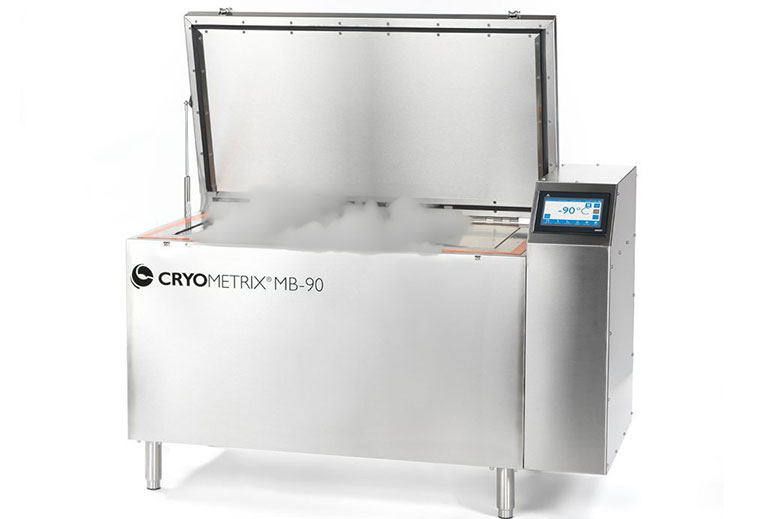In the biomedical field, precise and effective freezing techniques are crucial for the preservation and storage of biological materials like plasma, stem cells, and CAR-T cells. These materials are vital for research, therapy, and several CGMP (Current Good Manufacturing Practice) processes. This article delves into two advanced freezing technologies, blast freezing and shock freezing, exploring their processes, benefits, and the strategic considerations for their use in various biomedical applications.
Understanding Freezing Techniques in Biomedical Contexts
In biomedical applications, freezing isn’t just about preservation—it’s about maintaining biological activity and integrity after thawing. The challenge lies in the formation of ice crystals, which can rupture cellular membranes and denature proteins, compromising the biological material’s functionality. This is particularly critical for applications such as stem cell therapy, in vitro fertilization, and biopharmaceutical manufacturing, where the viability and functionality of cells post-thaw are essential for effectiveness.
Freezing methods must, therefore, be designed to minimize ice crystal formation and optimize the cooling rate. Different biological materials require tailored freezing protocols that account for their unique thermal properties and water content. Rapid freezing techniques such as blast and shock freezing mitigate these risks by speeding up the freezing process and reducing the size of ice crystals formed within the cells and tissues.
What is Blast Freezing?
Blast freezing for biomedical use involves exposing biological materials to extremely cold, circulated air. This method typically reduces temperatures rapidly enough to pass through critical temperature ranges quickly, thereby avoiding prolonged exposure to temperatures that can induce damaging ice crystal formation.
Technical Aspects: Modern blast freezers used in biomedicine feature advanced airflow technologies that ensure uniform temperature distribution, crucial for the consistent preservation of batch samples. These freezers also come equipped with sophisticated control systems that allow for the programming of specific freezing profiles based on the thermal sensitivity of the material being frozen.
Applications: This method is particularly useful for the bulk preservation of biological specimens like plasma or bulk pharmaceuticals, where the slightly slower cooling rate (compared to shock freezing) is acceptable in exchange for processing larger volumes efficiently.
Advantages: The process is energy-efficient, can be scaled up easily, and typically requires less specialized infrastructure than cryogenic freezing methods. It’s also generally easier to integrate into existing workflows in biomedical facilities.
Drawbacks: The slower cooling rate, compared to shock freezing, may not be ideal for all cell types, especially those extremely susceptible to ice-induced damage.
What is Shock Freezing?
Shock freezing utilizes cryogenic agents, such as liquid nitrogen or solid carbon dioxide, which allows temperatures to drop almost instantaneously. This rapid approach is essential for materials that are particularly vulnerable to the effects of slow freezing.
Technical Aspects: Cryogenic freezing involves the use of cryoprotectants that protect the cells by replacing water in the cell, thus preventing ice crystal formation. The equipment used must handle and administer these agents precisely, maintaining safety standards and ensuring that the freezing process is uniform and instantaneous.
Applications: Ideal for high-value biological samples such as stem cells, engineered tissues, and certain pharmaceuticals where even minimal ice formation can result in significant loss of function. It is also the method of choice for long-term storage where recovery rates are critical, such as in gene therapies and some clinical applications.
Advantages: Provides the highest viability rates post-thaw due to minimal ice damage. It is particularly effective for delicate biological structures.
Drawbacks: The high cost of cryogenic materials and the need for specialized equipment and safety protocols make it less accessible for some facilities.
Comparison of Blast and Shock Freezing
The choice between blast and shock freezing in biomedical contexts hinges on several factors:
Speed and Efficiency: Shock freezing is superior in terms of speed, effectively halting biological activity within seconds, compared to the several minutes or even hours it might take with blast freezing.
Cell Viability and Recovery: Shock freezing typically results in higher cell viability and recovery post-thaw, due to the minimal ice damage incurred.
Operational and Capital Costs: Blast freezing offers a more cost-effective solution for larger volumes and is less demanding in terms of operational logistics and infrastructure.
Scalability: Blast freezing is more adaptable to varying scales, suitable for everything from small laboratory settings to large industrial applications.
Choosing the Right Freezing Technique
Selecting the appropriate freezing method requires a careful assessment of several criteria:
Biological Material Sensitivity: The inherent sensitivity of the material to ice damage will often dictate the choice. Delicate cells and tissues might necessitate the rapid freezing rates achieved by shock freezing.
Volume and Throughput: Facilities that process large volumes of material might find blast freezing more practical and economically feasible.
Regulatory and Compliance Issues: Ensuring compliance with CGMP and other regulatory standards might influence the choice, as certain materials and the end-use might mandate specific freezing processes.
The decision to use blast or shock freezing in biomedical settings is critical and depends on the specific requirements of the biological materials being preserved. Each method offers distinct advantages, and the choice must align with the operational, financial, and regulatory needs of the biomedical facility. As the field advances, ongoing developments in freezing technologies continue to enhance the ability to store and use biological materials effectively, supporting the broader goals of medical research and therapeutic applications.


